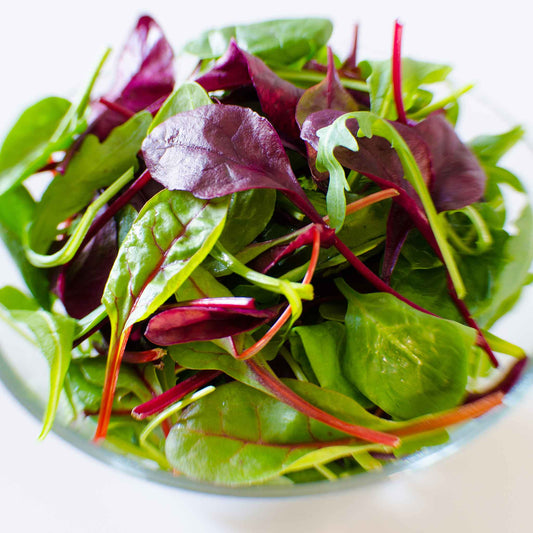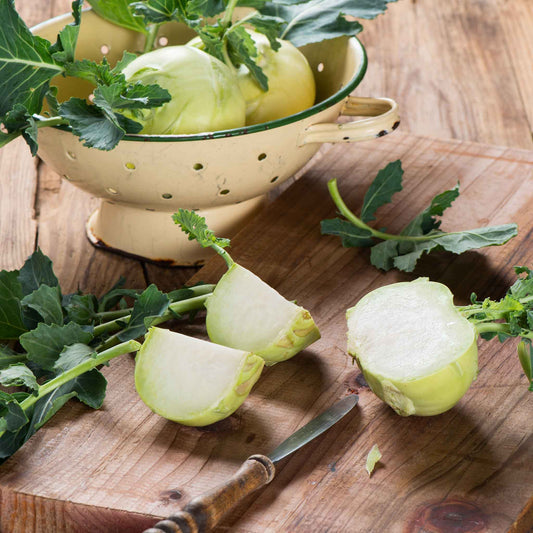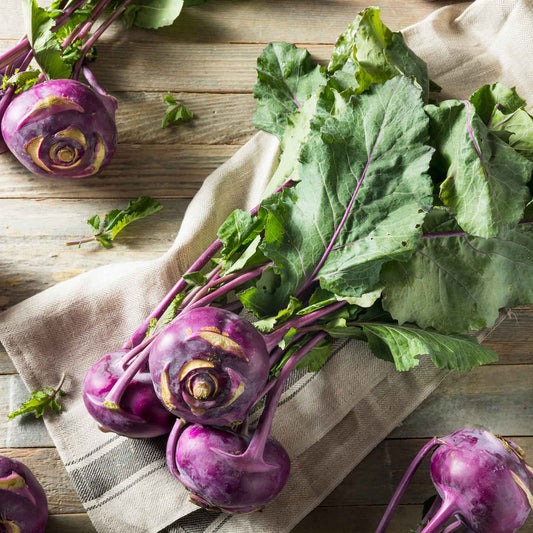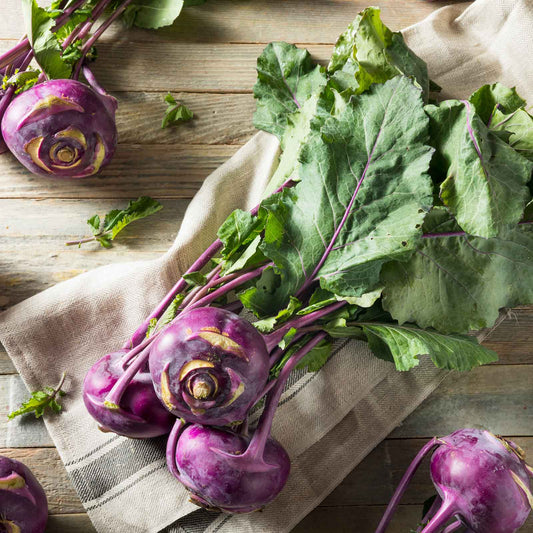-
main-collection-product-grid

Microgreen Seeds - Microgreen Rainbow Blend
Small size packs a concentrated, nutritional punchMicrogreen Seeds - Microgreen Rainbow Blend
Small size packs a concentrated, nutritional punchRegular price As Low As $4.99Regular priceUnit price per -
main-collection-product-grid

Kohlrabi Seeds - White Vienna
Deliciously mild taste raw or steamedKohlrabi Seeds - White Vienna
Deliciously mild taste raw or steamedRegular price As Low As $4.99Regular priceUnit price per -
main-collection-product-grid

Kohlrabi Seeds - Purple Vienna
This amethyst jewel for your garden provides a pleasantly mild tasteKohlrabi Seeds - Purple Vienna
This amethyst jewel for your garden provides a pleasantly mild tasteRegular price As Low As $4.99Regular priceUnit price per -
main-collection-product-grid

Kohlrabi Seeds (Organic) - Purple Vienna
Similar taste to turnip or cabbage, great addition to saladsKohlrabi Seeds (Organic) - Purple Vienna
Similar taste to turnip or cabbage, great addition to saladsRegular price As Low As $6.99Regular priceUnit price per
Why kohlrabi should be a staple in your garden
- Thrives in bright, sunny growing areas
- A cool-season annual with a delicious, edible stem
- Taste and texture is similar to a sweet salad turnip
- Like other cruciferous vegetables, a nutritional powerhouse
Kohlrabi is a tasty root vegetable to grow at home
If you aren’t already growing this delicious root vegetable in your garden, you should be! Kohlrabi, like all brassicas, is a tasty cool-season crop just bursting with nutrition. This dual-season crop can be sown in either spring or fall, but as the entire plant is harvested only once, be sure to plant several plants so that you can enjoy multiple kohlrabi bulbs throughout the season!
Kohlrabi does well direct-seeded four to six weeks before the last spring frost. Seed every two inches, and thin seedlings to four inches once the seedlings have two sets of true leaves. For a fall crop of kohlrabi, start seeds indoors six to eight weeks before the first fall frost. Seedlings are ready to be transplanted outside when they are about four inches tall—space seedlings four to six inches to allow the bulbs to fully form. As for planting sites, kohlrabi generally prefers full sun and well-draining, fertile soil, but in hotter climates, kohlrabi does benefit from some afternoon shade to protect this cool-season annual from excessive heat.
What to Expect when Harvesting Kohlrabi
Kohlrabi grows quickly, and bulbs are usually ready to harvest in two months, or when the bulbs are at least two inches across. Kohlrabi bulbs might be white, green, or purple, depending on the variety, but the taste will be similar to a salad turnip, but sweeter. Kohlrabi tends to taste best after a frost—cold temperatures bring out a delicious, sweet flavor that will have you wondering how a vegetable can taste so much like a fruit. To harvest kohlrabi, cut the base of the bulb at ground level. Trim the stems and discard (or save the stems for a delicious vegetable soup!) Be sure to peel the skin or the bulb will taste tough.
Kohlrabi is a healthy choice for meals
Like all brassicas, kohlrabi is a nutritional powerhouse. Rich in vitamin C and other antioxidants, kohlrabi helps protect the body against pathogens and inflammation. Kohlrabi is also an excellent source of fiber, which is crucial to digestive health. Eat the fruit raw like an apple, chop, and roast in the oven, or throw in a hearty stew! Kohlrabi is a versatile vegetable, and there’s no shortage of exciting ways to incorporate it into a meal. The other great thing about kohlrabi is that you don’t have to use it immediately—the bulbs keep well in the fridge, up to three weeks (if you can keep from eating them all at once!)
Choose from Eden Brothers’ heirloom kohlrabi varieties, like White Vienna, or the organic Purple Vienna. Or, save yourself the trouble of choosing and grow a few of each! We’re confident that you’ll fall in love with this quirky cruciferous vegetable. For more information about planting, growing, and harvesting kohlrabi seeds, see the Kohlrabi Seeds Planting Guide.



